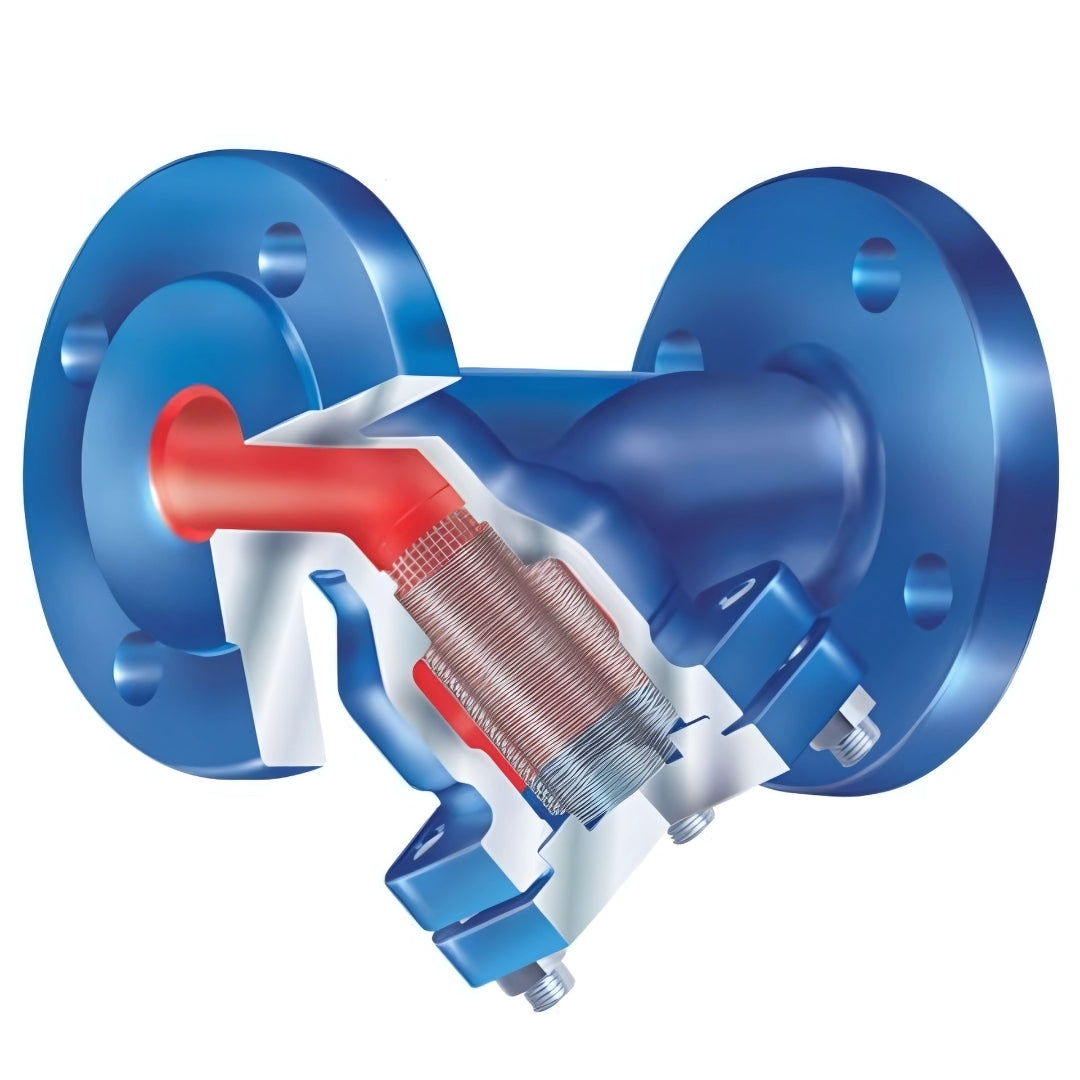Steam Valves
ARI Y-Type Strainer (Flanged PN40, Cast Steel Body)
ARI Y-Type Strainer (Flanged PN40, Cast Steel Body)
Couldn't load pickup availability
The ARI Y-Type Strainer with PN40 flanged ends and a cast steel body is engineered for demanding industrial environments where high-pressure filtration is critical. Designed to remove particles such as rust, scale, and debris from steam, water, or process fluids, this strainer safeguards downstream components including control valves, pumps, and instrumentation.
Constructed from durable cast steel, the body offers superior resistance to high temperatures and pressures, making it ideal for power generation, petrochemical plants, and high-pressure steam systems. The PN40 rating supports applications up to 40 bar, while the Y-pattern design promotes low pressure loss and efficient flow. A stainless steel mesh element ensures effective filtration, and a blow-off connection allows for convenient maintenance without removing the strainer body from the pipeline.
Built to ARI Armaturen’s high manufacturing standards, this Y-strainer provides long-term performance, minimal downtime, and dependable protection for critical system components.
Key Features
Cast Steel Construction
Offers strength, pressure resistance, and long service life in high-temperature environments.
PN40 Flanged Ends
Supports high-pressure systems up to 40 bar for demanding industrial applications.
Y-Pattern Flow Design
Reduces pressure drop while maintaining high flow efficiency.
Stainless Steel Strainer Element
Provides reliable particle filtration and resists corrosion in harsh conditions.
Blow-Off Port
Enables quick flushing of debris without dismantling the unit.
Ideal for Steam and Process Systems
Protects sensitive equipment in power plants, chemical facilities, and high-pressure fluid circuits.
Share

FAQ's
What is the difference between a valve and an actuator?
What types of actuators are available?
The main types of actuators are:
Pneumatic actuators – use compressed air for fast, reliable operation.
Electric actuators – use electrical power for precise control.
Hydraulic actuators – use fluid pressure for high-torque applications.
Each type offers unique advantages depending on the environment, media, and system control needs.
How do I choose the right actuator for my valve?
To select the correct actuator, consider:
Valve type and torque requirement
Power source available (air, electric, or hydraulic)
Operating environment (temperature, humidity, hazardous area)
Control signal type (on/off or modulating)
Matching actuator torque and compatibility with the valve’s ISO mounting ensures reliable performance.
What are the main types of valves used in automation?
The most common valves in automated systems include:
Ball valves – for tight shutoff and quick operation.
Butterfly valves – for larger flow control with compact design.
Globe valves – for precise throttling and flow regulation.
Check valves – to prevent backflow.
Gate valves – for full bore flow isolation.
What’s the difference between a double-acting and spring-return actuator?
Double-acting actuators use air (or power) to both open and close the valve.
Spring-return actuators use air to open (or close) the valve, and a built-in spring to automatically return it to a safe position when power or air is lost — ideal for fail-safe operation.
How often should valves and actuators be serviced?
Regular maintenance intervals depend on operating conditions, but a good rule of thumb is to inspect every 6–12 months.
This includes checking for leaks, lubrication, seal wear, and actuator responsiveness to prevent unexpected downtime.

